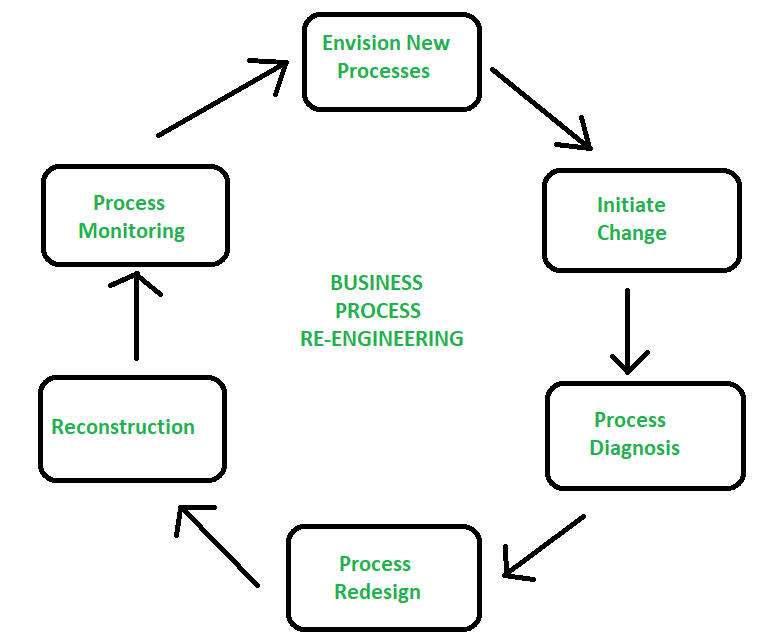1.业务流程再造(BPR):
业务流程再造(BPR)于1990年代初开发,是一种管理方法,旨在通过提高组织内部和整个组织中存在的流程的效率和有效性来进行改进。它是ERP的八项技术之一。
它有其自己的阶段,例如开始组织变更,建立重新设计的组织,确定BPR机会,了解现有流程,重新设计流程,为新的业务系统进行蓝图并执行转换。

好处 :
- 满意
- 知识的成长
- 对公司的团结
- 苛刻的工作
- 权威
缺点:
- 抵抗变化
- 对工人的要求更高
- 在某些情况下,业务流程没有重新设计,而只是自动化的。
- 缺乏管理支持
2.业务流程管理(BPM):
业务流程管理(BPM)实时更新流程。它是一种以流程为中心的方法,用于提高业务绩效,将信息技术与治理方法相结合。这是一系列活动,可以帮助企业平稳运行。这些过程从公司从开始到最终销售的活动开始。
BPM涉及的关键流程是风险管理,业务流程建模,业务流程外包,员工激励和产品库存。其主要目的是提高公司业务的效率和效率,并改善运营绩效。

好处 :
- 指导用户进行决策。
- 自动确定工作的优先级并进行路由。
- 实时可见性和过程控制。
- 改善预测。
- 提高生产力。
- 更低的花费。
缺点:
- 不允许重复处理。
- 它有其局限性。
- 缺乏沟通。
BPR和BPM之间的区别:
| BPR | BPM |
|---|---|
| Stands for Business Process Re-engineering. | Stands for Business Process Management. |
| Implementation is radical and one-step change. | Implementation is evolutionary and continuous. |
| Time taken for implementation is long. | Time taken for implementation is short and smooth takeover. |
| One major process at a time. | It is flexible. |
| It’s involvement is in business and process expert. | It’s involvement has process experts and all related people. |
| Risk is High. | Risk is Low. |
| Outcome sometimes comes out to be drastic. | Outcome is improved. |
| Cultural issues are major concern. | Cultural issues are not much concern. |
| Implementation stress and concern is high. | Implementation stress and concern is low. |